Six days. Five overnight stays in five cities in Spain. Lunch in Paris. Stopover in Barcelona. Then Córdoba, Seville, Granada and Málaga. An Andalusia Whirlwind Tour where we visit the Mezquita and the Alhambra. We’re touring Andalusia in October 2023 to follow the trend of travelling to hot spots outside summer, as we did with Italy in 2022.
After checking in at Eurostars Palace, we walked to the centre of Córdoba, where the main dish the day would be the Mezquita.
The Mezquita of Córdoba, also known as the Mosque-Cathedral of Córdoba and officially the Cathedral of Our Lady of the Assumption (Catedral de Nuestra Señora de la Asunción), is a symbol of cultural and religious coexistence. It stands as a testament to the harmonious blending of Islamic and Christian influences that have shaped the history of Spain.
This remarkable edifice, located in the heart of Córdoba, has a rich and diverse history that spans over a millennium.

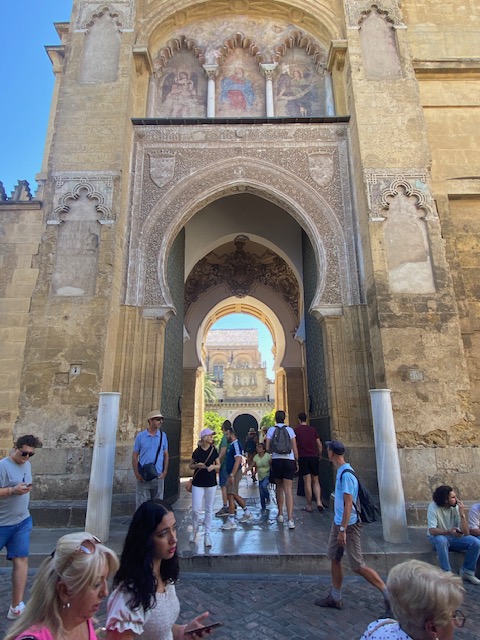

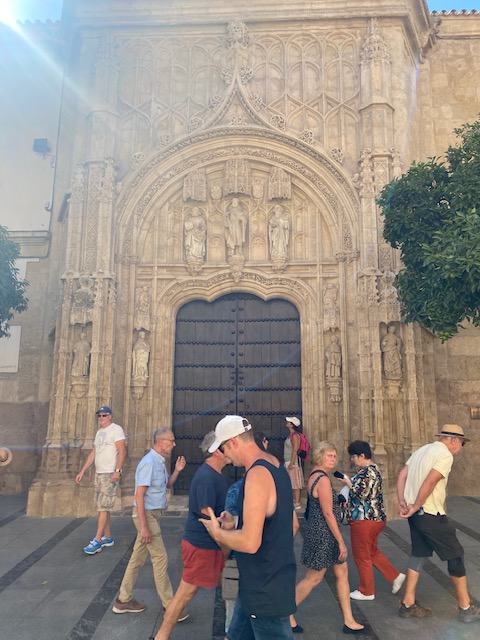

History
According to traditional accounts a Visigothic church, the Roman-Catholic Basilica of Vincent of Saragossa (mid 6th century), originally stood on the site of the current Mosque-Cathedral, although this has been a matter of scholarly debate.
The Mezquita dates back to the 8th century when Córdoba was under Islamic rule. In 785, the Umayyad ruler Abd al-Rahman I ordered the construction of the Great Mosque, which was to be the centerpiece of the city.
The mosque was expanded and embellished by successive rulers, ultimately becoming one of the largest in the Islamic world. Its initial design was inspired by the architectural styles of the Middle East, including horseshoe arches, geometric patterns, and the use of columns and pillars.
Córdoba, during this period, was a beacon of knowledge and culture. The Great Mosque not only served as a place of worship but also as a center for learning, attracting scholars from various parts of the world. The mosque was a remarkable embodiment of the Islamic architectural and artistic achievements of the time.
1146 marked the first Dedication of the Cathedral. Don Raimundo, archbishop of Toledo, celebrated Holy Mass in the mosque in the presence of King Alfonso VII of Castile.
In 1236, Córdoba was reconquered by King Ferdinand III of Castile and the Mezquita was transformed into a Christian cathedral. This transformation marked the beginning of a new chapter in the history of the building.
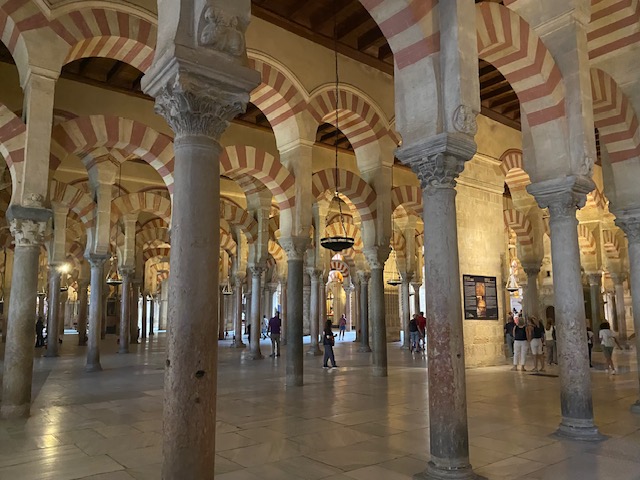
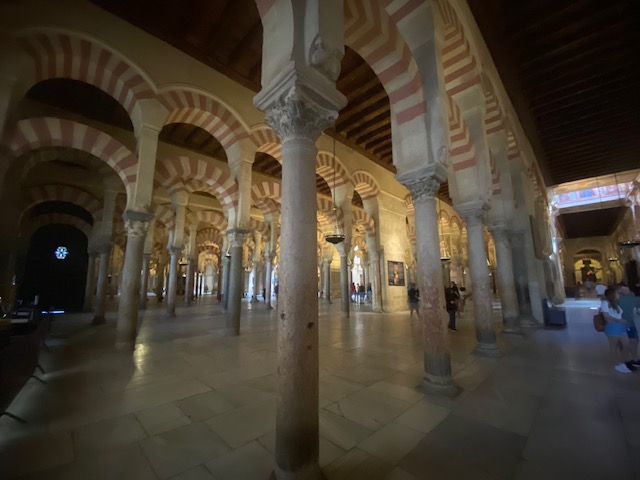
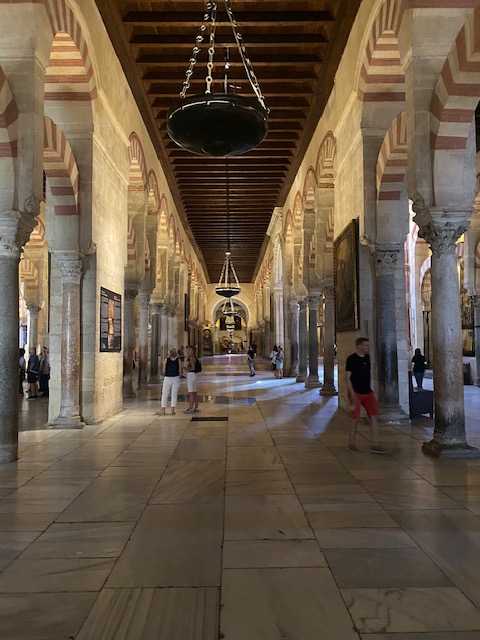
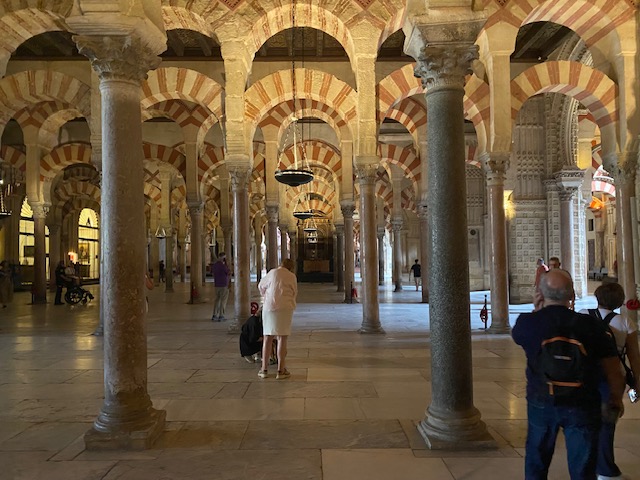
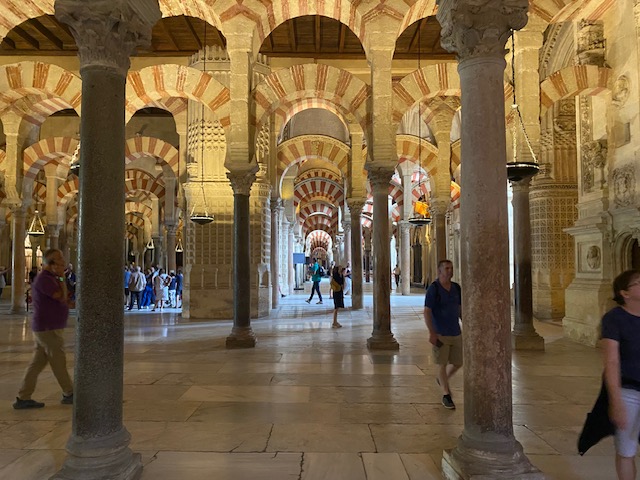


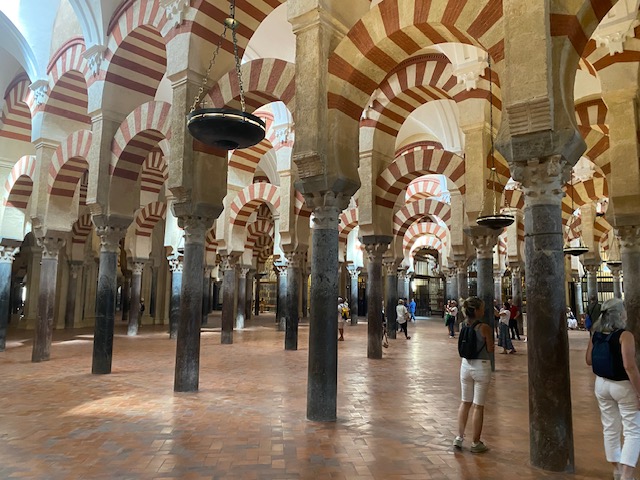

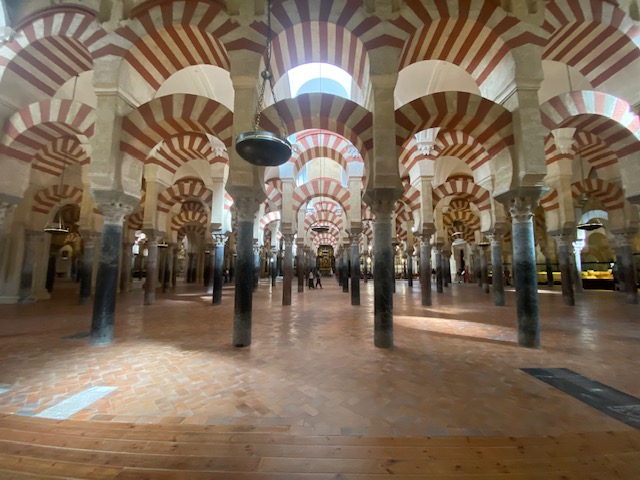
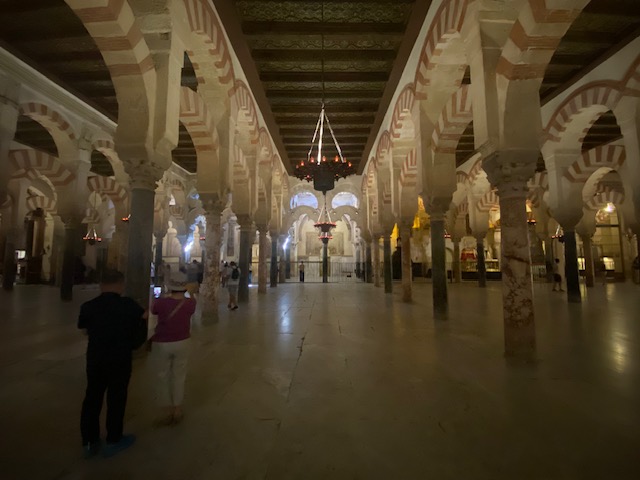
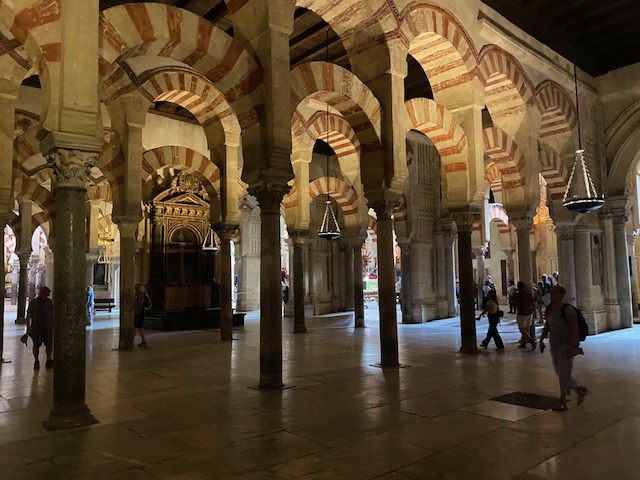
Architectural features
The most striking feature of the Mezquita is its unique blend of architectural styles, which reflects the transition from Islamic to Christian rule.
The mosque’s interior is characterized by its forest of columns and arches, creating a mesmerizing play of light and shadow. The horseshoe arches and intricate stucco work are indicative of Islamic design, while the later Christian additions, such as the choir and high altar, demonstrate a contrasting aesthetic.
One of the most famous sections of the Mezquita is the ‘mihrab’, the focal point of the mosque, which was elaborately decorated with intricate Islamic calligraphy and geometric patterns. This exquisite craftsmanship highlights the influence of Islamic art and design.
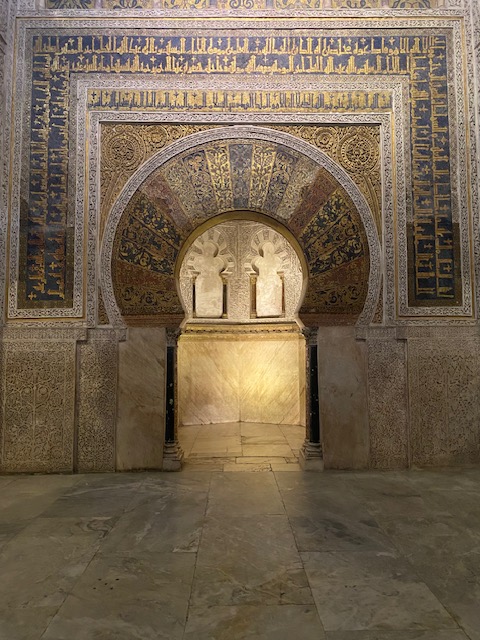
The Christian additions to the Mezquita are equally remarkable. The Gothic and Renaissance elements, including the choir and the Baroque altar, are integrated seamlessly into the structure. The most notable Christian addition is the construction of a cathedral nave within the mosque, effectively creating a Christian place of worship within the Islamic structure. This integration is a testament to the respect for the existing structure and the desire to incorporate it into the evolving Christian identity of Córdoba.
Cultural significance
The Mezquita is not merely a structure but a symbol of the interplay of cultures and religions in Spain. It represents the enduring coexistence of Islam and Christianity, a testament to the country’s complex history. This harmonious coexistence is a stark contrast to the religious conflicts that marked much of Europe‘s history.
The Mezquita’s importance goes beyond its architectural beauty. It is a UNESCO World Heritage Site and draws millions of visitors from around the world, making it a significant cultural and economic asset for Córdoba and Spain as a whole. The Mezquita has become a symbol of Spain’s rich multicultural heritage, and it continues to inspire artists, historians, and scholars alike.
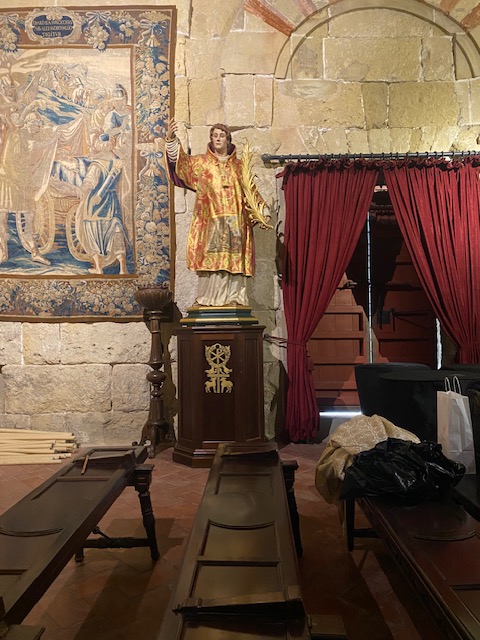
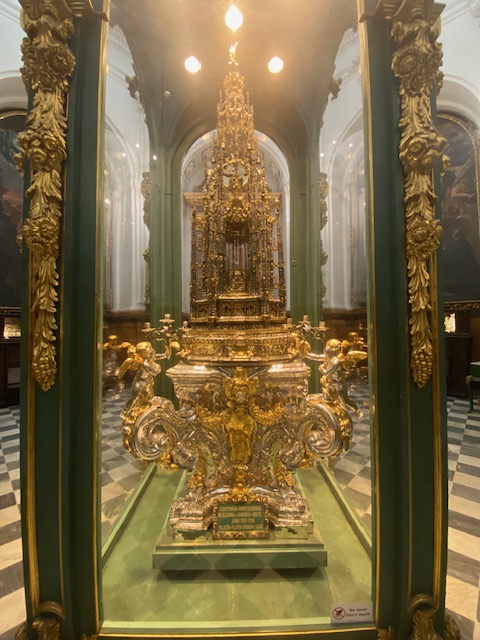
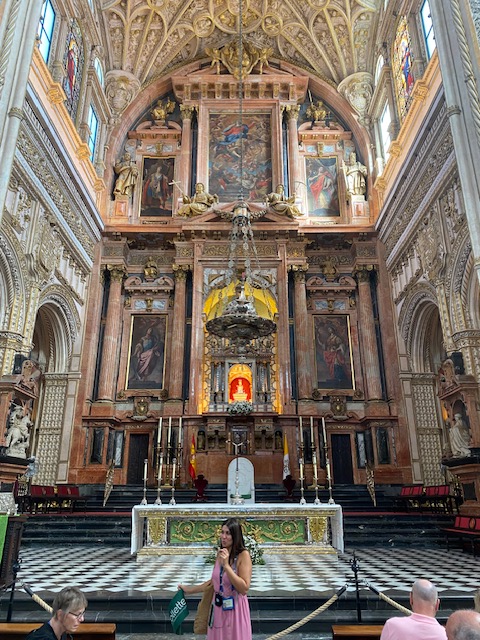

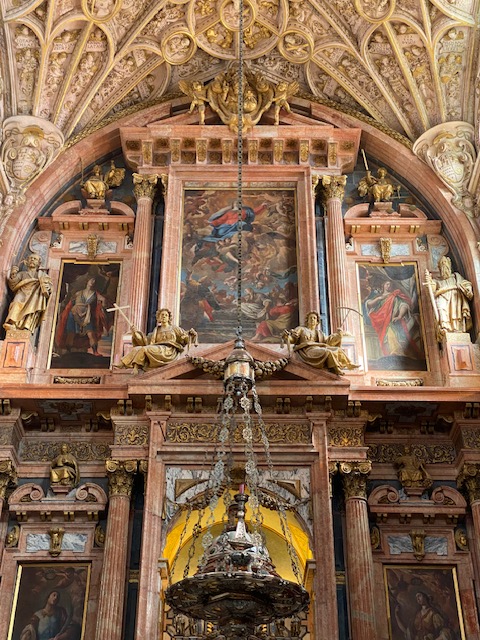
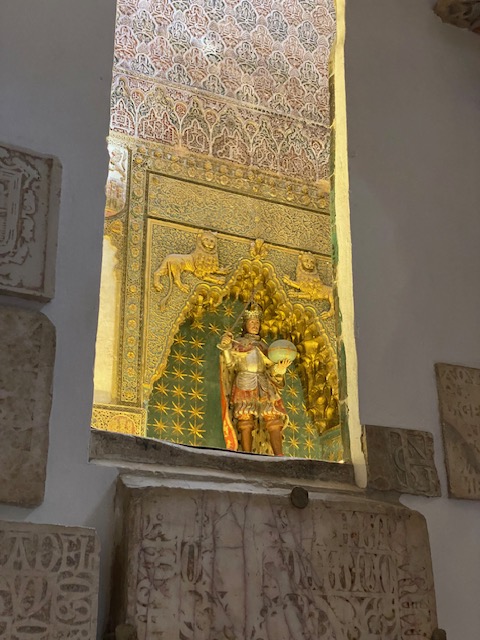

Preservation efforts
Preserving the Mezquita’s architectural and cultural heritage has been a significant concern for the Spanish government and various cultural organizations. In recent years, there have been ongoing restoration and conservation efforts to ensure the building’s structural integrity and to protect its historical significance. These efforts aim to strike a balance between maintaining the building’s Islamic and Christian elements, recognizing its dual heritage.
Conclusion
The Mezquita of Cordoba stands as a remarkable testament to the coexistence of cultures and religions.
Its evolution from a grand mosque to a Christian cathedral encapsulates the complex history of Spain and the harmonious blending of architectural styles, art, and spirituality. This iconic building is a living representation of the intertwined history of Islam and Christianity on the Iberian Peninsula.
The Mezquita continues to inspire awe and admiration, drawing visitors and scholars from around the world. Its significance extends beyond its architectural beauty, serving as a symbol of tolerance and a reminder of the importance of preserving our shared cultural heritage. In a world marked by religious and cultural divides, the Mezquita of Cordoba stands as a powerful reminder of what can be achieved through respect, dialogue, and the appreciation of diversity.
A visit
One can’t travel to Andalusia and not visit the Mezquita. It’s such an icon for Spain and its Moorish history.
As a consequence, the Mezquita is very popular sight and you absolutely need to book tickets in advance on the official website.
In Spain, you need to provide an identity card or passport number and this means you have to carry this identity document with you.
Inside, you can visit on your own – with an audio guide or not – or book a tour guide. As we’re not too keen on audioguides, we visited didn’t take one. Sure, you miss information, but you can read up beforehand or afterwards. The official website is very elaborate.
The Mezquita is very photogenic, so even if you don’t listen to (all) explanations of the audioguides, your visit can take a while.
2023 Andalusia Whirlwind Tour
- PRELUDE | Visiting Gibraltar in 2013.
- REVIEW | Eurostar Amsterdam – Antwerp – Brussels – Paris in 2023.
- PARIS | Restaurant Le Train Bleu at the Gare de Lyon.
- REVIEW | SNCF TGV inOui from Paris-Gare-de-Lyon to Barcelona-Sants.
- REVIEW | Hotel Barcelo Sants.
- INTERMEZZO | Spain saw a surge of Belgians visiting in the first quarter of 2024.
- SPAIN | Renfe Sala Club or Club Lounge at Adif stations.
- REVIEW | Renfe AVE in Premium from Barcelona-Sants to Córdoba.

Amazing place and photos!
LikeLiked by 2 people
Thank you Elvira.
It is an amazing place!
LikeLiked by 1 person
A pleasure Timothy.
I can see it, great!
LikeLiked by 1 person